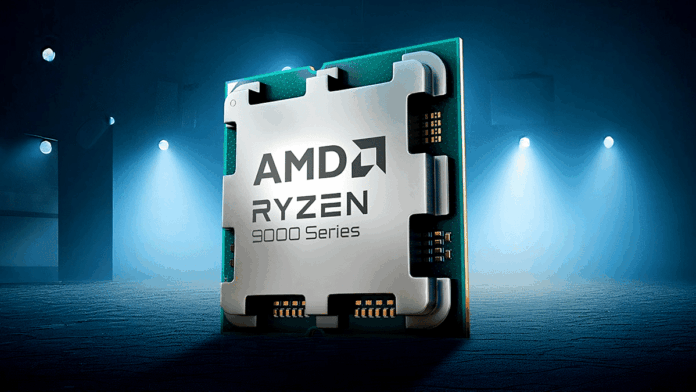AMD had actually declared the issue of defective Ryzen 9000 CPUs on Asrock motherboards to be resolved. However, the reports continue – and a tech YouTuber claims to have found the cause.
Last February, the first user reports appeared complaining about a damaged Ryzen 9800X3D. By mid-April, the number of such defect reports had grown to a low three-digit number.
What is striking about this issue is that Asrock motherboards were the common denominator among owners of the defective Ryzen 9800X3D. AMD itself stated in a statement that a “memory compatibility issue in earlier BIOS versions” was to blame and declared the issue resolved after an update.
However, this discussion has picked up speed again in recent days. There is also lively discussion on the Asrock subreddit, where a moderator explainsthat the “cause has not yet been determined.”
Now a tech YouTuber has come forward with a theory that is somewhat reminiscent of the instability problems of Intel’s 13th and 14th CPU generations . “Tech YES City” looked at the voltage behavior of a Ryzen 9800X3D and Ryzen 7 7700 on an Asrock X870E Taichi Lite and other ASUS, MSI, and Gigabyte motherboards.
Possible cause: Dynamic SoC voltage on Asrock boards
In these tests by the tech YouTuber, Asrock motherboards showed a special feature: The SoC voltage – responsible for the memory controller, among other things – is dynamically regulated here.
This is basically an energy-saving feature, as the voltage can be increased or decreased depending on the system load, thereby increasing efficiency.
- The Ryzen 7 9800X3D showed a peak voltage of 1.265 volts during a short round of Fortnite. The situation was no better with the Ryzen 7 7700, which displayed up to 1.27 volts.
- Presumably, these fluctuations could even exceed 1.3 volts for microseconds – peaks that the HWinfo64 tool cannot even register.
This 1.3-volt limit has already appeared once before in the context of AMD processors: In some cases, SoC voltages of 1.368 volts were measured, which, as in the current case, led to destroyed Ryzen 7000 CPUs (via der8auer).
The decisive factor is what automatically
means
The theory of “Tech YES City” is that the reports of defective Ryzen 9000 processors are related to the SoC voltage, which is regulated via the “SoC/Uncore OC Mode” function in the BIOS, as was the case at the time.
If this feature is inactive, this SoC voltage is requested dynamically as described above. Only when active does the respective value remain statically defined.
As a rule, the “SoC/Uncore OC Mode” setting is set to “Automatic” for all motherboard manufacturers – however, according to “Tech YES City,” the boards differ in their interpretation of “automatic.”
- While MSI, Gigabyte, and Asus understand the automatic state as “enabled” (and therefore static), Asrock, according to the Tech YouTuber, should consider the auto state as “disabled” (and therefore dynamic).
- This is why the majority of reports come from users with Asrock boards – however, the isolated cases with boards from other manufacturers remain unexplained in this context.
Neither AMD nor Asrock have yet commented on this theory, but at least it would explain why defect reports continue to appear even after the aforementioned supposed BIOS fix.
At least if the assumption turns out to be correct, preventing further cases from occurring is fairly simple, at least in theory.
Another Asrock update that simply sets the automatic “SoC/Uncore OC Mode” setting to enabled should suffice. Those affected whose Ryzen 9000 has crashed must continue to contact AMD and Asrock customer service.


